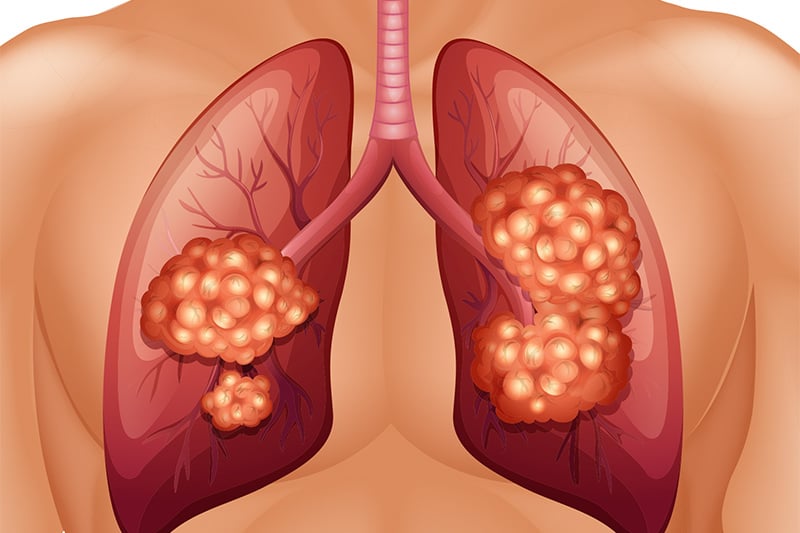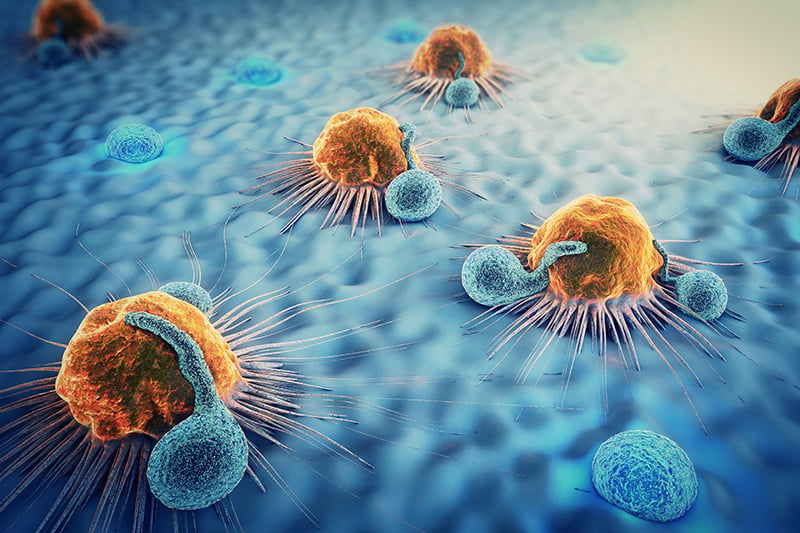
Cigarette smoking: The silent killer of life
Smoking cigarettes can unfavorably affect the body in many ways, particularly raising the risks of serious heart and respiratory diseases. The effect of smoking is caused when substances are burned and absorbed into the bloodstream. These highly toxic and carcinogenic compounds contained in cigarettes significantly increase the risks of developing lung cancer, tracheal cancer, bladder cancer and pancreatic cancer. Moreover, toxic chemicals such as carbon monoxide and tar cause serious damages to the vessels which eventually lead to ischemic heart disease and stroke. Although smoking is a hard habit to break since nicotine is highly addictive, smoke cessation is highly recommended to lower chances of heart and lung conditions.
Statistical data revealed by World Health Organization (WHO) indicates that the tobacco epidemic is one of the biggest public health threats, killing more than 7 million people a year. Cigarettes are smoked by over 1.1 billion people globally. More than 7 million of those deaths are the result of direct tobacco use while around 890,000 deaths are the result of non-smokers being exposed to second-hand smoke.
Cigarette smoking is a toxic and carcinogenic mixture of more than 7,000 chemicals which badly affect the body. Among these substances, cigarette contains over 250 toxic substances and 70 carcinogens – substances that promote cancer formation such as acetaldehyde, aromatic amines, arsenic, benzene and formaldehyde. Apart from lung cancer, smoking can potentially cause other serious health problems such as cardiovascular and neurological diseases. More importantly, nonsmokers (secondhand smokers) who are exposed to smoke at home, at work or environment increase their risk of developing lung cancer.
Non-smokers who breathe in secondhand smoke take in nicotine and other toxic chemicals similar to smokers do. If women are exposed to second-hand smoke during pregnancy, both mothers and babies are put at greater risk to develop the abnormalities. Some of the health conditions associated with being exposed to second-hand smoke are a miscarriage, low birth weight, preterm birth, birth defects of the mouth and lip, learning or behavioral deficiencies in the child and Sudden Infant Death Syndrome (SIDS).
Lung cancer is one of the leading causes of cancer deaths in the world. Recently, global data indicates that lung cancer is the most common cancer in the world with 1.8 million deaths per year. Particularly in Thailand, lung cancer (both small cell and non-small cell) is the second most common cancer in men and the fourth most common cancer in women. Although lung cancer does not rank number 1 in terms of its incidence, it remains the most common cause of cancer deaths. Since lung cancer might not produce any warning signs and symptoms in its early stages, it has been frequently caught when disease has already progressed with metastasis (spread) to other organs in the body. Compared to other cancers with higher incidence rates e.g. breast cancer and prostate cancer, survival rate and life expectancy of lung cancer seems to be lower due to poor prognosis. Therefore, smoke prevention and cessation is the best possible way to remain healthy.

Cigarette and lung cancer
Smoking is the main cause of lung cancer cases, both in smokers and secondhand smokers. Several types of carcinogens have been found in cigarettes. Other risk factors for lung cancer include exposure to radon gas which is produced by the natural breakdown of uranium in soil, rock and water, exposure to asbestos and other carcinogens in the environment such as arsenic, chromium and nickel. Family history of lung cancer and genetic mutations also play a role in lung cancer formation.
Decades ago, lung cancer was considered rare disease. After several forms of cigarettes had been invented, the incidence of lung cancer dramatically increased. Clinical studies have drawn a conclusion that a wide range of carcinogens –substances promote cancer formation is the major cause of lung cancer.
Cigarette or tobacco smoke is made up of thousands chemicals, including several toxic substances and carcinogens. Tar or tobacco residue –partially combusted particulate matter made by the burning of tobacco can form a sticky layer on the inside of the lungs. Carcinogens commonly found in tar include polycyclic aromatic hydrocarbons (PAH), benzene, acrylamide and acrylonitrile. Smoking exposes delicate cells inside the lungs directly to these compounds, resulting in mutations in the DNA of the cells, which can eventually leads to lung cancer.
It has been statistically estimated that without cigarette smoking, the incidence of lung cancer should reduce significantly up to 80-90% worldwide. However, in Asian population e.g. Thais, 40-60% of lung cancer cases are not primarily caused by smoking. Obtained from an extensive study, the major contributing factor of lung cancer development in these population groups is assumed to be the abnormal gene mutations e.g. EGFR mutations.
Does it also induce other cancer types?
Smoking causes the majority of lung cancer cases, both in smokers and secondhand smokers. Several carcinogens, substances that promote cancer formation have been found in cigarettes such as acetaldehyde, aromatic amines, arsenic, benzene and formaldehyde. Apart from lung cancer, smoking can potentially cause other cancers including breast cancer and bladder cancer.

Diagnosis of Lung Cancer
During early phase, lung cancer may not cause any specific signs and symptoms until it has spread presented with advanced manifestations. However, some patients with early lung cancer might have symptoms. The most common symptoms of lung cancer are:
- A chronic cough
- Coughing up blood or rust-colored sputum (spit or phlegm)
- Chest pain which is often worse with deep breathing or coughing
- Shortness of breath or wheezing
- Hoarseness
- Weight loss and loss of appetite
- Fatigue and weakness
In addition, bone pain is possible symptom, representing advanced or metastatic stage. To early screen lung cancer without any signs and symptoms, people with high risk of lung cancer should consider annual lung cancer screening using low-dose CT (computerized tomography) scan. High risk groups are defined as having at least a 30 pack-year history of smoking and currently smoke or having smoke quitting within the past 15 years. A pack year is calculated by multiplying the number of packs of cigarettes smoked per day by the number of years the person has smoked. For example, 30 pack-year is equal to smoking 2 packs (40 cigarettes) per day for 15 years. An early screening by using low-dose CT largely helps to find lung cancer at an earlier stage even before symptoms arise. Early detection significantly increases the chances of being cured and results in a better quality of life”.
In case that lung cancer is suspected, additional test is tissue sample. A sample of abnormal cells in the lungs will be further removed by performing a procedure called a biopsy. A biopsy sample may also be taken from lymph nodes or other areas where cancer might spread. The pathogenic results obtained from biopsy reveal the specific characteristics of abnormal cells and type of lung cancer that determine disease prognosis. After lung cancer has been diagnosed, imaging tests might be required to determine the extent (stage) of lung cancer. Staging tests may include CT, MRI and PET/CT. The results from imaging procedures will be used to guide appropriate treatment plans.

Treatment of lung cancer
The two general types of lung cancer include small cell lung cancer (SCLC) and non-small cell lung cancer (NSCLC). Lung cancer can be treated in several ways, depending on the type, size, location and stage whether it has spread to other organs while taking into consideration of individual patient’s conditions and underlying diseases. Non-small cell lung cancer can be treated with surgery (as a first line therapy for early stages), chemotherapy, radiation therapy, targeted therapy, or a combination of these treatments while small cell lung cancers are usually treated with radiation therapy and chemotherapy. In stage 4 lung cancer, chemotherapy, targeted and immunotherapy are major treatments. Targeted drug treatments focus on specific abnormalities within cancer cells. Targeted drug treatments works by blocking these abnormalities, causing cancer cells to die. Several targeted therapy drugs are approved to treat lung cancer, even though most are reserved for patients with advanced or recurrent cancer. In addition, some targeted therapies only work effectively in patients with certain genetic mutations. Immunotherapy is considered a novel therapy that uses medicines to stimulate a patient’s immune system (cytotoxic T-cells) to recognize and destroy cancer cells more effectively. Nevertheless, immunotherapy is generally reserved for patients with advanced or relapsed lung cancer.
Even though, the advancements in cancer treatment has progressed, resulting in prolonged life expectancy and improved survival rates, lung cancer has ranked number 1 as the leading cause of cancer related deaths. Smoking cessation can considerably decrease risks of develop lung cancer while early detection with low-dose CT significantly helps to identify lung cancer at its earlier stages, leading to more chances of being cured.